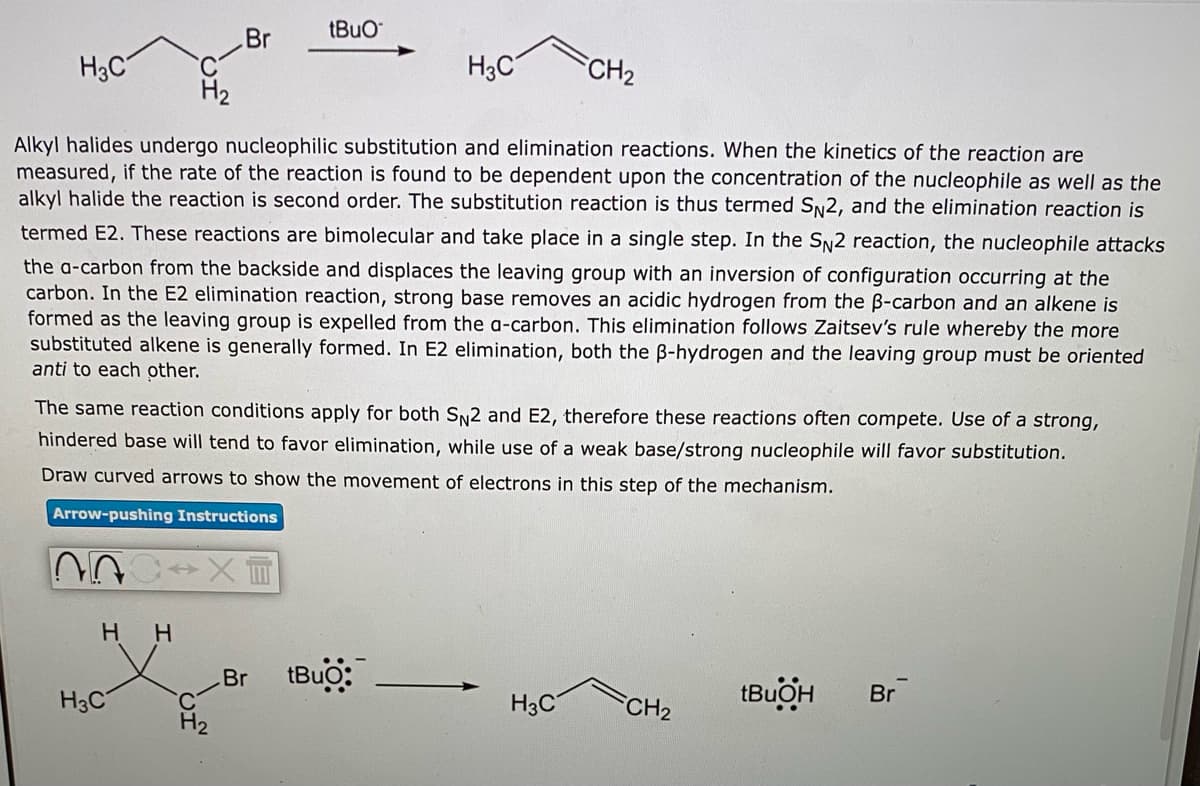Br H3C H3C CH2 cyl halides undergo nucleophilic substitution and elimination reactions. When the kinetics of the reaction are easured, if the rate of the reaction is found to be dependent upon the concentration of the nucleophile as well as the kyl halide the reaction is second order. The substitution reaction is thus termed SN2, and the elimination reaction is rmed E2. These reactions are bimolecular and take place in a single step. In the SN2 reaction, the nucleophile attacks e a-carbon from the backside and displaces the leaving group with an inversion of configuration occurring at the arbon. In the E2 elimination reaction, strong base removes an acidic hydrogen from the B-carbon and an alkene is prmed as the leaving group is expelled from the a-carbon. This elimination follows Zaitsev's rule whereby the more ubstituted alkene is generally formed. In E2 elimination, both the B-hydrogen and the leaving group must be oriented anti to each other. The same reaction conditions apply for both SN2 and E2, therefore these reactions often compete. Use of a strong, hindered base will tend to favor elimination, while use of a weak base/strong nucleophile will favor substitution. Draw curved arrows to show the movement of electrons in this step of the mechanism. Arrow-pushing Instructions H H Br tBuo: H3C H3C CH2 Br
Reactions of Ethers
Ethers (R-O-R’) are compounds formed by replacing hydrogen atoms of an alcohol (R-OH compound) or a phenol (C6H5OH) by an aryl/ acyl group (functional group after removing single hydrogen from an aromatic ring). In this section, reaction, preparation and behavior of ethers are discussed in the context of organic chemistry.
Epoxides
Epoxides are a special class of cyclic ethers which are an important functional group in organic chemistry and generate reactive centers due to their unusual high reactivity. Due to their high reactivity, epoxides are considered to be toxic and mutagenic.
Williamson Ether Synthesis
An organic reaction in which an organohalide and a deprotonated alcohol forms ether is known as Williamson ether synthesis. Alexander Williamson developed the Williamson ether synthesis in 1850. The formation of ether in this synthesis is an SN2 reaction.

Step by step
Solved in 2 steps with 2 images







